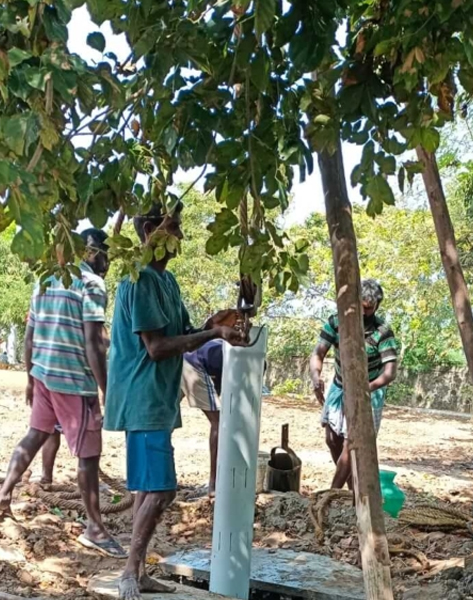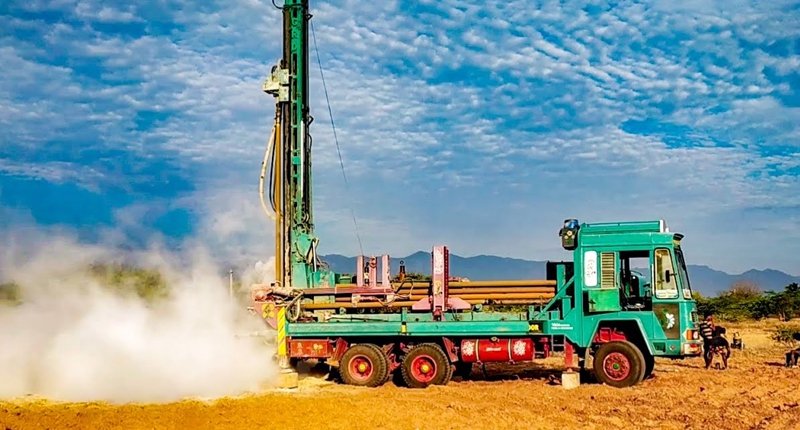
Borewell contractors in Mangadu – Vasantham Borewell Service is the highly rated Borewell contractors with flexible price in Mangadu.
Borewells contractors in Mangadu – Vasantham Borewell drilling contractors making a good bonding with borewell customers because of the great achievement in borewell contractors belongs to the valuable happy customers and well serviced leading borewell drilling for residential and commercial work in Mangadu.
Vasantham Borewell Contractors has gained a reputed name among their customers in the borewell drilling and piling industry. We believe in “Genuineness and Reliability” on Drilling and water management.
Vasantham Borewell is one of the fastest deep borewell drilling company in Mangadu and surroundings. Our position is result of a superior water management strategy, which fully focuses on top product wells, Portable Borewell Drilling Machine utilities.
Two sizes, 4.5 and 6 inches are typically the preferred borewell depths for residential purposes. 4.5 inch borewells are usually drilled for
- Single family
- Homes
- Small apartments
While 6 inch borewells are ideal for large apartments or housing complexes. We provide these all type of drilling process done by us. If you have any requirement to drill borewells please contact as +91 99415 50708
Temporary reservoir
A small reservoir of water is made at the outlet of the tube well. This reservoir is used for different usage of water by the local population.
Casing
0:33
Borewell digging
The tube well casing houses the inlet, cylinder, piston valves and rising main of a “down-the-hole” type hand pump. Casing to support the external surfaces of the borehole against collapse may be needed, either temporarily or permanently, and is often made of PVC pipe, which is both cheap and inert.
Seepage down the tube well bore is prevented by the sanitary seal. Seepage from the ground above the aquifer is excluded by the lengths of plain casing. Water to be pumped is admitted through slots in the lower lengths of casing.
Water abstracted from aquifers in relatively soft ground usually contains sand or silt particles, which are liable to cause rapid wear to pump valves and cylinders (and dissatisfaction among consumers). Methods of preventing these particles from reaching the pump are of two general types, screening and sand/gravel packing.
Screening
In the simplest devices, slots are simply cut in the casing. More elaborate compact screens are available commercially; some can be bolted on to pump inlets. Materials used include woven wire and man-made fabric; the latter can be wrapped around the pump inlet assembly.
Sand/gravel packing
Graded sand and gravel may be placed from the top of the borehole. More compact, pre-bonded, packs of sand and/or gravel are available commercially; some of these can also form part of the pump inlet assembly. Sand and/or gravel packing are meant to eliminate particles from the water before they reach the screen which they would otherwise have passed through.
If you are comfortable to send mails then enquire it through mail also. Email Id: prabhu48978@gmail.com.
Procedure to lay a borewell
The laying of borewells in the city has a few procedures that must be adhered to in order to not inconvenience other residents or violate the rules in place.
Residents are prohibited from digging borewells on streets and pavements. Such borewells are deemed illegal. The borewells can be dug only within the premises of the building, inside the compound walls.
Borewells and open wells in the premises of a household must be registered with the approved by filling out a form for the same. The submission can be made online or offline at the office or depot in the locality.
The registration details must be shared within 90 days to the CMWSSB. Residents must furnish information on purpose of use, type, depth and diameter of the borewell, type of pump and information on the EB connection that is to be used with the borewell. The information furnished must be accurate. The borewells may be subject to inspection and enumeration by the officials of the CMWSSB.
While digging borewells, slurry management must be done to ensure that the extracted slurry is not dumped in the surrounding areas or let into sewage lines like in the above instance. The slurry is to be taken away from the site by the company contracted for digging and disposed of responsibly.
Borewells dug at households cannot be used to extract water for commercial purposes such as water supply through tankers.
As more households undertake borewell digging, it is up to individuals to not deviate from these norms and not cause issues in the neighborhood due to their negligence. Residents of the neighborhood also have to remain vigilant and ensure proper slurry disposal is followed and the borewells are not used for commercial purposes, thereby leading to over-extraction.
Visit us Google maps
FAQS
Is a bore and a well the same thing?
A well is less than 20m deep. A bore is more than 20m deep.
What type of well water is best?
Drilled wells are often the most reliable type of well. Because they go so deep, they can go far beyond the waterline of the aquifer.
Is borehole water safe to drink?
The short answer is a resounding YES! All spring and most bottled water is derived from the ground, while both spring and bottled water sources pump water from boreholes, which is drilled by EDRS.
Why is it called bore water?
Bore water is groundwater that has been accessed by drilling a bore into underground water storages called aquifers. The way you can use bore water depends on its quality, which relates to the salt levels in the water.
What is the TDS in drinking water?
TDS Level Chart for Drinking Water
| TDS in Water (measured in PPM) | Suitability for Drinking Water |
| Between 50-150 | Excellent for drinking |
| 150-250 | Good |
| 250-300 | Fair |
| 300-500 | Poor, not good for drinking |
what depths can you detect a change in colour/size of the soil strate observed during the drilling of the borewell?
For instance the top 10 -20 feet would be the top soil and would be dark reddish brown color while at depths beyond 20 ft, the color could change to light brown or grayish. Any pictures taken during the drilling would be awesome!
What is borewell yield?
A common way to describe the yield of a new borewell is in ‘inches’ measured by the free, unrestrained flow of water from a borewell over a 90 degree ‘V’ notch. The basic principle is that the discharge is directly related to the height of the water level from the bottom of the V notch.
What is the length of Borewell pipe?
All 3 Inch Bore Well Casing Pipe, Length: 3 m are manufactured by using quality assured material and advanced techniques, which make them up to the standard in this highly challenging field.
How do I know my Borewell groundwater level?
Looking out for nature’s signals
Some have claimed that species like Neem, Tamarind, and Acacia trees have a way of indicating the presence of groundwater aquifers. It has been found that if some branches of these trees bend downwards in a straight line, this indicates the presence of groundwater.
When should I stop Borewell drilling?
If it is wet soil only up to 1000 feet and not the rock granules, then it it is useless bore well.
Testimonials
I Choose Vasantham Borewell I Believe and developed a great partnership with Vasantham Borewell and their dedication to our works.
I simply could not find any other provider that offered a Perfect works. Thanks for the smart & earlier submitors of projects.
Nice Borewell work, I am genuinely excited, Thank you.







